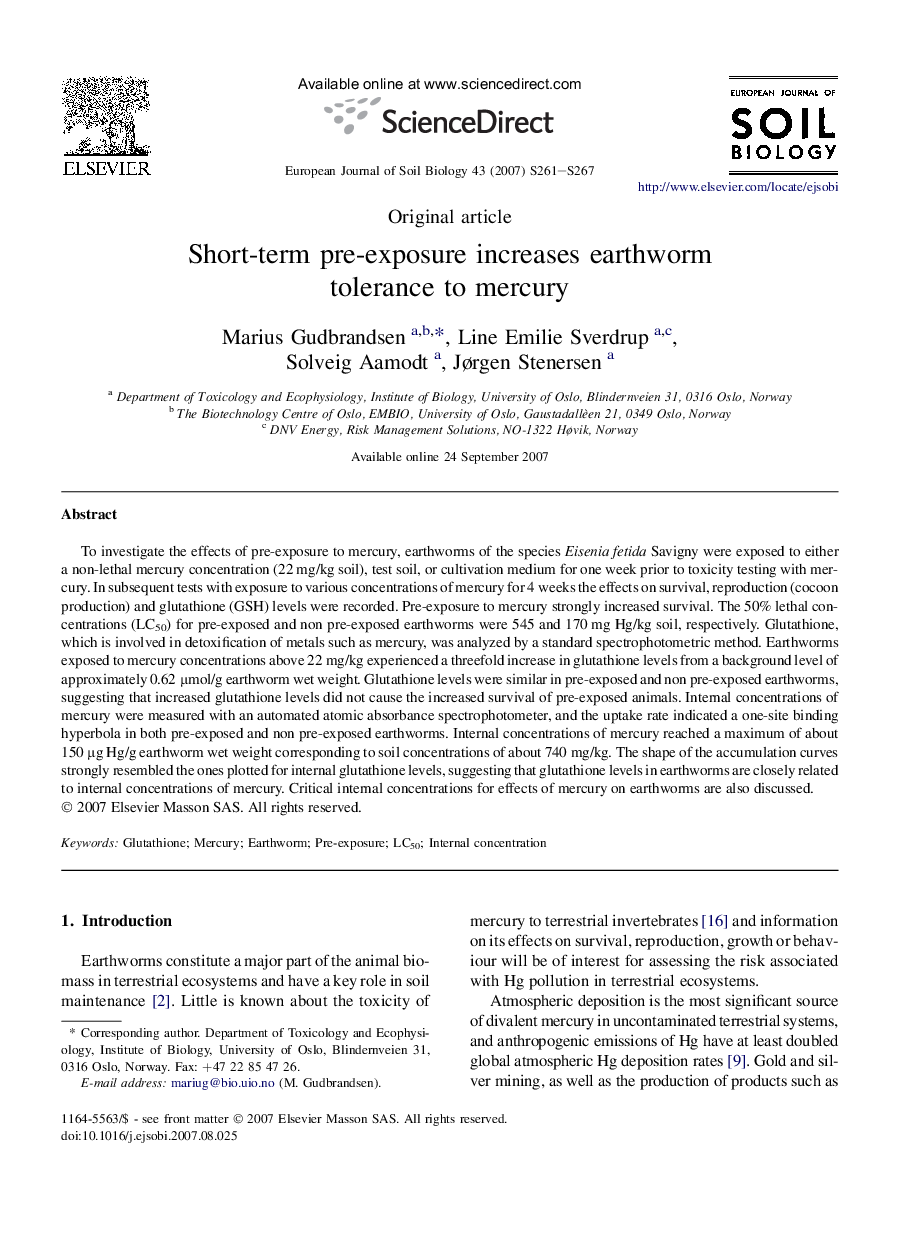| Article ID | Journal | Published Year | Pages | File Type |
|---|---|---|---|---|
| 4392479 | European Journal of Soil Biology | 2007 | 7 Pages |
To investigate the effects of pre-exposure to mercury, earthworms of the species Eisenia fetida Savigny were exposed to either a non-lethal mercury concentration (22 mg/kg soil), test soil, or cultivation medium for one week prior to toxicity testing with mercury. In subsequent tests with exposure to various concentrations of mercury for 4 weeks the effects on survival, reproduction (cocoon production) and glutathione (GSH) levels were recorded. Pre-exposure to mercury strongly increased survival. The 50% lethal concentrations (LC50) for pre-exposed and non pre-exposed earthworms were 545 and 170 mg Hg/kg soil, respectively. Glutathione, which is involved in detoxification of metals such as mercury, was analyzed by a standard spectrophotometric method. Earthworms exposed to mercury concentrations above 22 mg/kg experienced a threefold increase in glutathione levels from a background level of approximately 0.62 μmol/g earthworm wet weight. Glutathione levels were similar in pre-exposed and non pre-exposed earthworms, suggesting that increased glutathione levels did not cause the increased survival of pre-exposed animals. Internal concentrations of mercury were measured with an automated atomic absorbance spectrophotometer, and the uptake rate indicated a one-site binding hyperbola in both pre-exposed and non pre-exposed earthworms. Internal concentrations of mercury reached a maximum of about 150 μg Hg/g earthworm wet weight corresponding to soil concentrations of about 740 mg/kg. The shape of the accumulation curves strongly resembled the ones plotted for internal glutathione levels, suggesting that glutathione levels in earthworms are closely related to internal concentrations of mercury. Critical internal concentrations for effects of mercury on earthworms are also discussed.
